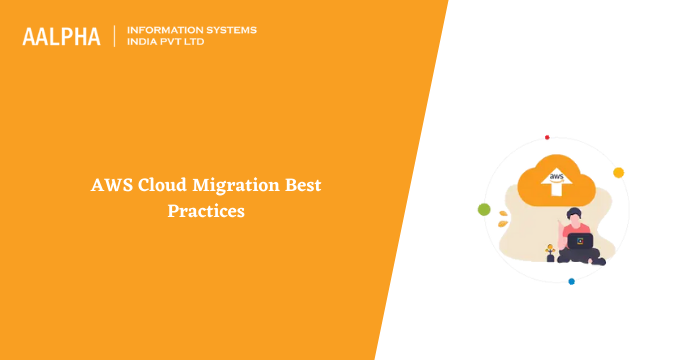AWS Professional Services has led and advised organizations on hundreds of migration initiatives over the past few years. This year, we established a dedicated team of professionals, dubbed the AWS Professional Services Mass Migration team, to help clients with large-scale (hundreds of apps) migration efforts.
Customers often inquire about some of the AWS best strategies for swiftly and reliably moving apps to AWS. The following is a list of migration practices:
AWS Migration Best Practices
Stages of Pre-Migration
-
Have a clear vision for the future intersection of IT and business.
Consider the impact of this vision on your organization’s strategy; promote it widely. Importantly, it is critical to articulate why the strategy is critical to the company.
-
Clearly define and communicate a cloud governance model.
Establishing roles and responsibilities for the larger team and adhering to your organization’s information security precepts of least-access privileges and separation of functions goes a long way toward ensuring business goals. Additionally, it enables you to implement the appropriate controls to strengthen your security posture. You’ll need to address several issues before allowing internal users to access cloud services.
How many Amazon Web Services (AWS) accounts should you have? Who will have access to which information? How are you going to offer that access? Contact AWS to learn about best practices and the advantages and disadvantages of each approach to cloud governance.
-
Educate personnel early in the process.
The more informed your staff are about AWS, the simpler the shift will be; the more internal advocates you have, the easier it will be to dispel FUD and break down obstacles. This process should begin early in the Journey before making enterprise-wide choices on the future state of your IT landscape in AWS.”
-
Identify which IT assets you already hold and which ones you want to migrate.
This enables you to quantify and evaluate your cloud adoption’s success completely. Invest effort in identifying the appropriate discovery technologies (such as Risc Networks’ CloudScape, ScienceLogic’s ScienceLogic, or AWS Application Discovery Service) and maintaining an updated application inventory. This simplifies migration planning and reduces the likelihood of missing a dependent during the move.
-
Choose the appropriate partner(s) to assist you on your Journey.
You should seek people who possess technical competence and migration experience to AWS and adhere to the appropriate agile approach and project management structure. Moreover, you may already have partners and a cloud competence team in-house.
Allow time to investigate them and get recommendations before choosing a cloud partner. Additionally, consider the operational model you want to employ and if the partner can assist in facilitating that model (creating continuous integration/continuous delivery pipelines, managed services). For further information, see The Future of Managed Services in the Cloud.
Stage of Migration
-
Begin small and straightforward.
In other words, establish some rapid victories. The more familiar your workforce develops with AWS services, and the more quickly your stakeholders see the advantages, the simpler it will be to “sell” the idea internally. To do this, you need consistency and openness, which many firms achieve via a succession of quick successes.
-
Streamline.
Automation enables the cloud to be agile. Spend time reviewing and building new procedures that will benefit from it when you transition. If not all your processes are automatable, carefully identify which ones are and enable your staff to automate them.
-
View the cloud as a transformative force.
It would be best if you adapted your internal procedures to accommodate this technological development. Utilize your transformative tendency to persuade stakeholders to adopt this new paradigm. And maintain a healthy skepticism toward people who assert, “But we’ve always done it this way…”
-
Wherever feasible, usefully managed services.
This comprises Amazon RDS, AWS Directory Service, and Amazon DynamoDB. Allow AWS to manage routine maintenance tasks, freeing your staff to concentrate on what matters most: your customers.
Stages Following Migration
-
Keep an eye on everything.
By implementing a thorough monitoring approach, you can guarantee that you cover all the bases for developing strong architectures for your applications. Having data-driven insights into how your environment performs enables you to make sound business choices when weighing performance against cost trade-offs.
-
Take use of cloud-native monitoring technologies.
Numerous tools (e.g., New Relic, APPDYNAMICS, and AWS CloudWatch Logs) are available for AWS application-level insight and monitoring. More importantly, utilize the tools that are most appropriate for your company. Your operations staff will appreciate you in the long run, and your company owners will benefit from more precise data points for decision-making.
-
Leverage Amazon Web Services’ enterprise support.
Technical Account Managers (TAMs) and billing concierges provided by AWS as part of the corporate support package are important tools. Moreover, they become an integral part of your larger virtual cloud team, serving as a single point of contact and escalation channel with AWS and a vital source of technical knowledge and assistance.
To know more about AWS cloud migration best practices, connect with Cloud application development company!
